The Netherlands to hold election on October 29 after government collapse

Polls indicate a close race between Dutch far-right PVV party and the Labour/Green Left alliance. Dutch voters will head to the polls on October 29 in snap elections triggered by the dramatic collapse of the right-wing ruling coalition. Interior Minister Judith Uitermark announced the election date on Friday and said she would coordinate with municipalities to ensure a smooth voting process. Polls indicate a close race between the far-right Party for Freedom (PVV), led by firebrand Geert Wilders, and the Labour/Green Left alliance, headed by former European Commission Vice President Frans Timmermans. The centre-right VVD is trailing slightly behind, suggesting a tightly contested vote. The election was called after Wilders withdrew the PVV from the governing coalition in a dispute over immigration policy, pushing Prime Minister Dick Schoof and his cabinet to resign. Wilders had accused the government of dragging its feet on implementing what was intended to be the “strictest-ever” immigration policy agreed by the four-way coalition. His decision to bring down the coalition prompted a backlash from partners, who accused him of acting out of self-interest. Advertisement “We had a right-wing majority and he’s let it all go for the sake of his ego,” said Dilan Yesilgoz, leader of the VVD, which was a coalition member. “It is irresponsible to take down the government at this point,” added Nicolien van Vroonhoven, leader of the NSC, another member of the collapsed alliance. Wilders’s PVV stunned the political establishment in November 2023 by winning 37 of the 150 seats in parliament – emerging as the largest party by a strong margin. To govern, he assembled a four-party coalition with the VVD, the farmers’ BBB party and the anticorruption NSC – but the price was to give up his ambition to become prime minister. Polling as of May 31 shows the PVV’s support has dipped slightly – from 23 percent at the time of the 2023 election to 20 percent. The Labour/Green Left alliance follows closely with 19 percent and currently holds 25 seats in the lower house of parliament, second only to the PVV. The fragmented political landscape makes the outcome difficult to predict. In the meantime, Schoof has said he and his cabinet will continue in a caretaker role until a new government is formed. Adblock test (Why?)
Trump v Musk: How did we get here?
[unable to retrieve full-text content] The US president and the world’s richest man appear to have fallen out, how did we get here?
What are ‘crypto kidnappings’ and why are they on the rise?
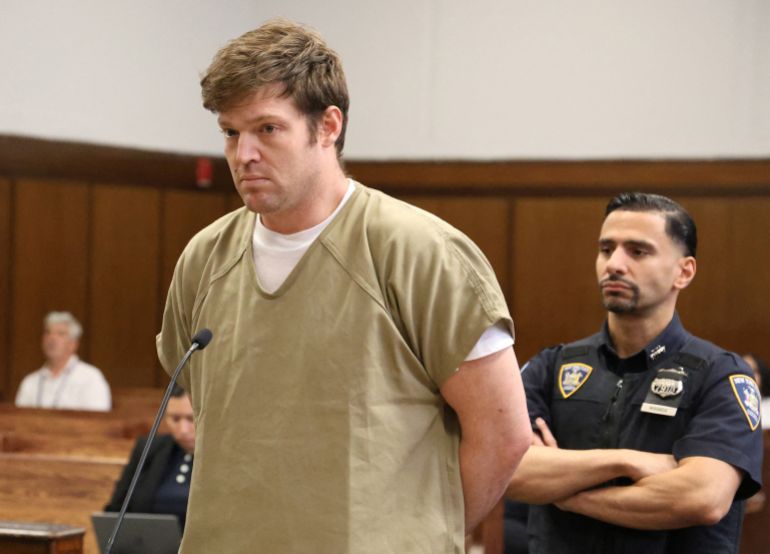
Michael Valentino Teofrasto Carturan was renting a luxury New York townhouse for $40,000 a month, enjoying the fruits of his highly lucrative investments in cryptocurrency. But in May, his 17-room Manhattan home became a torture chamber in which he was held by kidnappers for 17 days. Carturan’s captors, John Woeltz and William Duplessie, who wanted access to his cryptocurrency accounts, used brutal methods in their bid to prise open Carturan’s Bitcoin wallet, purportedly containing some $28m worth of cryptocurrency. Among other torture methods, they hung him from the building’s roof, shocked him with electrical wires and threatened him with a chainsaw. When all else failed, they forced him to smoke crack cocaine. Ultimately, they were unsuccessful. After more than two gruelling weeks, Carturan managed to escape the townhouse and Woeltz and Duplessie were subsequently arrested and charged with kidnapping and assault. William Duplessie appears in Manhattan Criminal Court as an indictment is prepared to be handed down for his involvement in a cryptocurrency kidnapping, in New York City, on May 30, 2025 [Jefferson Siegel/Pool via Reuters] Carturan’s ordeal was one of the latest in a spate of “wrench attacks”, which include so-called “crypto kidnappings”, combining high-tech cybertheft with old-fashioned thuggery and have been taking place in several countries around the world. Have arrests for crypto kidnapping attacks been made elsewhere? Yes. On May 31, 26 people were charged for several attempted kidnappings of a top figure in France’s cryptocurrency world, French prosecutors said. Advertisement It was the culmination of a police investigation into an “attempted kidnapping by an organised gang” of the daughter and grandson of the CEO of crypto firm Paymium in Paris on May 13, and “other unsuccessful plans”, a failed attempt on the same targets the day before, and another attempt near the western city of Nantes on June 2. “Eighteen people have been placed in pre-trial detention, three have requested a deferred hearing, and four have been placed under judicial supervision,” the Paris public prosecutor’s office said, concerning the Paris attack. The suspects are all aged between 16 and 23. France has been the centre of several attacks on prominent crypto entrepreneurs in recent months. But crypto-linked kidnappings have occurred in other countries, too. A woman walks her dog on Rue Pache, near the location where a masked gang attempted to kidnap the daughter and grandson of a crypto businessman in Paris, France [Gonzalo Fuentes/Reuters] Where else have crypto kidnappings taken place? In addition to the recent attempted abductions in Paris, a group of criminals kidnapped David Balland, cofounder of the cryptocurrency firm Ledger, and his wife in central France in January. In a particularly gruesome turn of events, the kidnappers cut off one of Balland’s fingers and sent the video of the mutilation to Ledger. Within two days, however, the French gendarmerie had freed both victims. Nine suspects are under criminal investigation in that case. In December 2024, the wife of crypto investor and influencer Stephane Winkel was kidnapped from the couple’s home in Belgium. She was rescued after her kidnapper crashed his car during a dramatic police chase. Advertisement Canada and Australia have also witnessed high-profile kidnappings, with crypto executives and traders abducted and forced to pay ransoms ranging from $40,000 to $1m in digital assets. It is unclear whether the recent spate of crypto kidnappings is connected in any way. What is cryptocurrency? Bitcoin, which began trading in January 2009, was the very first cryptocurrency. This form of monetary exchange allows people to bypass central banks and traditional payment methods. It is now a functioning, decentralised monetary system, with hundreds of millions of users worldwide. Bitcoin was first used in a transaction in 2009, valued at just $0.004 per Bitcoin. Yesterday, Bitcoin’s price closed at nearly $101,576 per Bitcoin – about 53 percent higher than a year ago, and nearly 2.5 trillion percentage points higher than in 2009. Initially, the digital currency was favoured by internet libertarians who were drawn to the idea that money should be free from government interference. It quickly gained more mainstream popularity, and the price has shot up. More recently, United States President Donald Trump has taken steps to mint several cryptocurrencies, meaning they would be included in a “Crypto Strategic Reserve”, boosting their price even more in the process. While cryptocurrency thefts are nothing new, they have historically involved hacking digital accounts holding large sums of the currency. In 2022, for instance, internet thieves stole an estimated $570m from Binance, the world’s largest crypto exchange. Advertisement But as Bitcoin and other digital assets continue to climb in value, criminals are shifting their efforts from online hacking to real-world extortion, via kidnappings and torture. How do criminals target victims in crypto kidnappings? Victims are not hard to find. Some crypto tycoons, many of whom are young men, have a habit of flaunting their wealth on social media or by appearing at cryptocurrency conferences, which allows criminals to easily identify targets. Many have continued to flaunt their wealth in spite of the 2016 Kim Kardashian kidnapping incident. The US reality TV star was tied up in her hotel room in Paris as robbers made off with millions of dollars worth of jewellery. The men – dubbed the “grandpa robbers” because of their ages – were later caught and sentenced to prison by a French court. That was not a crypto attack, but as more crypto tycoons have appeared, there is little to differentiate them from the fabulously wealthy like the Kardashians. Even those with large crypto wealth who are more cautious about displaying their wealth on social media and in public have been exposed to criminal activity via data breaches at cryptocurrency exchanges, however. In May 2025, Coinbase Global announced that hackers had managed to obtain personal information, including the home addresses of almost 70,000 customers in the previous few months, putting thousands at risk of attack or extortion. Besides hacking the accounts of crypto millionaires for this sort of information, criminals have also bribed insiders at crypto exchanges for
US-backed GHF says Gaza aid sites remain shut as Israeli attacks kill 22
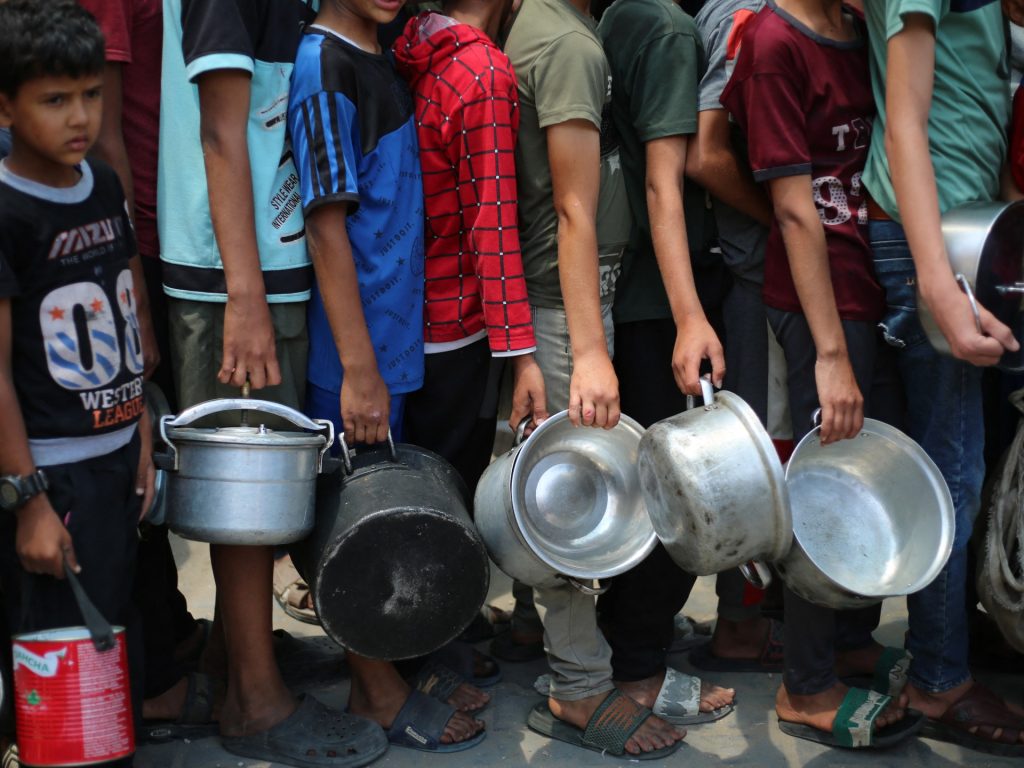
At least 22 people have been killed in Israeli attacks across Gaza, medical sources told Al Jazeera, as the US-backed group distributing aid in the Palestinian territory said all its centres were closed until further notice. In northern Gaza, at least 10 people were killed in Israeli tank fire in Jabalia, local health authorities said. At least five people were killed in Khan Younis in southern Gaza when Israeli drones struck tents housing displaced people, medical sources said. A journalist who was wounded in an Israeli strike on Ahli Hospital on Thursday succumbed to their injures, raising the number of journalists killed in Gaza since the beginning of the war to 226, Gaza’s Government Media Office said on Friday. The office called on “all journalistic bodies in all countries of the world to condemn these systematic crimes against Palestinian journalists and media professionals in the Gaza Strip”. “We also call on them to exert serious and effective pressure to stop the crime of genocide, protect journalists and media professionals in the Gaza Strip, and halt their killing,” it added. Advertisement Aid sites remain closed The attacks come as the US-backed group tasked with distributing aid in Gaza said its hubs would remain closed until further notice, despite a growing hunger crisis in the territory. Aid agencies have warned that all residents in Gaza face the threat of famine after Israel imposed a severe blockade on the territory in March, blocking the entry of food, medicine and fuel. Amid international pressure, Israel allowed some aid to enter Gaza last month, but aid groups have warned the amounts are inadequate. The Gaza Humanitarian Foundation (GHF), a previously unknown group that is overseeing the aid distribution effort, advised people to stay away from the aid distribution hubs “for their safety”. GHF, which began distributing aid last week, said in a Facebook post on Friday that details about reopening would be announced later. Operations at the group’s aid distribution hubs were halted earlier this week following several incidents of deadly violence near the sites, in which Israeli forces opened fire on Palestinian aid seekers. Only two sites distributed aid on Thursday. On Sunday, thousands of people headed towards the distribution site hours before dawn. As they approached, Israeli forces ordered them to disperse and come back later. When the crowds reached the Flag Roundabout, 1km (0.6 mile) away, at about 3am, Israeli forces opened fire, witnesses said. “There was fire from all directions, from naval warships, from tanks and drones,” said Amr Abu Teiba, who was in the crowd. Advertisement Goher Rahbour, a surgeon working in Gaza’s Khan Younis, told Al Jazeera that the bullets extracted from victims of the shooting near the aid distribution centre on Sunday were from M16 assault guns, consistent with those used by the Israeli military. “I operated on two patients and we removed M16 bullets from abdominal injuries,” Rahbour told Al Jazeera. “When I spoke to these patients, they were very clear to say they came from Israeli forces.” The surgeon also said hospitals were operating with little or no resources. “There is a lack of everything – antibiotics, swabs, surgical instruments,” he said. The GHF’s approach has been fiercely criticised by humanitarian organisations, including the United Nations. The GHF says private security contractors guarding its sites have not fired on crowds. Israel’s military has acknowledged firing warning shots on previous occasions. Israel’s war on Gaza has killed at least 54,677 Palestinians and wounded 125,530, Gaza’s Health Ministry said on Thursday. An estimated 1,139 people were killed in Israel during the Hamas-led attacks of October 7, 2023, and more than 200 were taken captive. On Thursday, mediators Qatar and Egypt announced renewed efforts to secure a ceasefire deal based on a US-backed proposal for a 60-day truce and the entry of humanitarian aid. Previous ceasefire efforts have, however, repeatedly broken down over Israel’s rejection of key terms. In past rounds of negotiations, Israel has walked back commitments related to a permanent halt to the war and a full withdrawal of its troops from Gaza. Advertisement Adblock test (Why?)
Harvard challenges Trump’s efforts to block US entry for foreign students
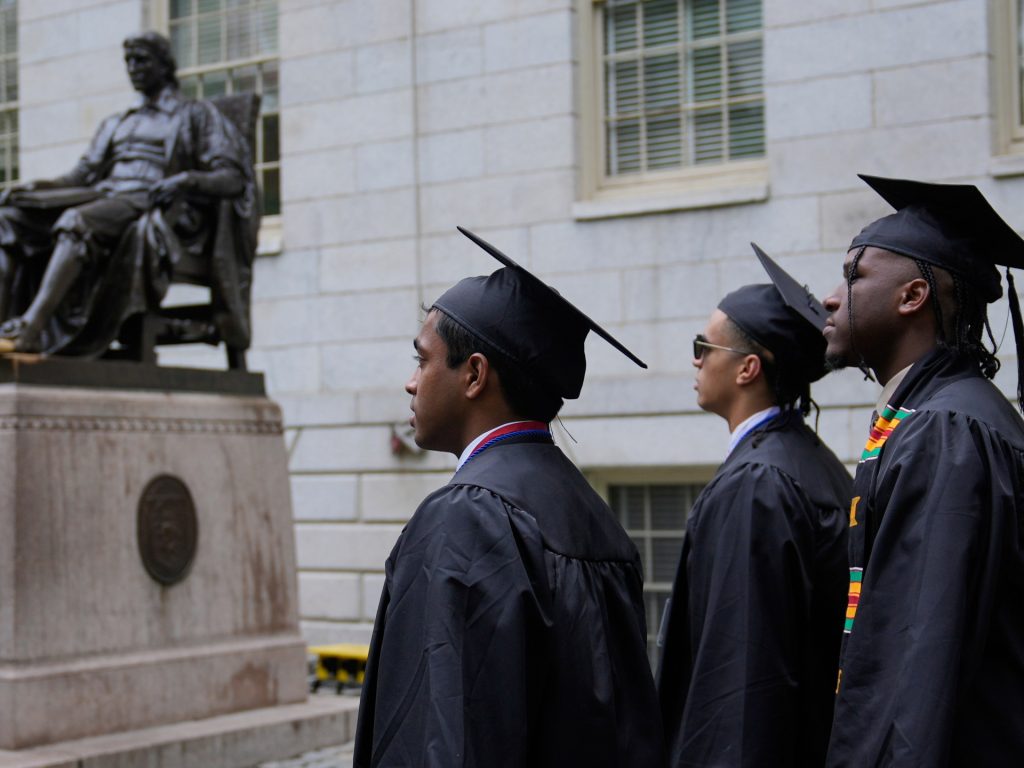
Harvard University has broadened its existing lawsuit against the administration of President Donald Trump to fight a new action that attempts to stop its international students from entering the United States. On Thursday, the prestigious Ivy League school filed an amended complaint that alleges Trump’s latest executive order violates the rights of the school and its students. Just one day earlier, Trump published an executive order claiming that “it is necessary to restrict the entry of foreign nationals who seek to enter the United States solely or principally” to attend Harvard. He called Harvard’s international students a “class of aliens” whose arrival “would be detrimental to the interests of the United States”. As a result, he said that he had the right under the Immigration and Nationality Act to deny them entry into the country. But in Thursday’s court filing, Harvard dismissed that argument as the latest salvo in Trump’s months-long campaign to harm the school. “The President’s actions thus are not undertaken to protect the ‘interests of the United States,’ but instead to pursue a government vendetta against Harvard,” the amended complaint says. Advertisement It further alleged that, by issuing a new executive order to restrict students’ entry, the Trump administration was attempting to circumvent an existing court order that blocked it from preventing Harvard’s registration of foreign students. The complaint called upon US District Judge Allison Burroughs in Massachusetts to extend her temporary restraining order to include Trump’s latest attack on Harvard’s foreign students. “Harvard’s more than 7,000 F-1 and J-1 visa holders — and their dependents — have become pawns in the government’s escalating campaign of retaliation,” Harvard wrote. Trump began his campaign against Harvard and other prominent schools earlier this year, after taking office for a second term as president. He blamed the universities for failing to take sterner action against the Palestinian solidarity protests that cropped up on their campuses in the wake of Israel’s war on Gaza. The president called the demonstrations anti-Semitic and pledged to remove foreign students from the US who participated. Protest organisers, meanwhile, have argued that their aims were non-violent and that the actions of a few have been used to tar the movement overall. Critics have also accused Trump of using the protests as leverage to exert greater control over the country’s universities, including private schools like Harvard and its fellow Ivy League school, Columbia University. In early March, Columbia — whose protest encampments were emulated at campuses across the country — saw $400m in federal funding stripped from its budget. Advertisement The school later agreed to a list of demands issued by the Trump administration, including changes to its disciplinary policies and a review of its Middle East studies programme. Harvard University was also given a list of demands to comply with. But unlike Columbia, it refused, citing concerns that the restrictions would limit its academic freedom. The Trump administration’s demands included ending Harvard’s diversity programmes and allowing the federal government to audit its hiring and admissions processes to “establish viewpoint diversity”. When those demands were not met, it proceeded to strip Harvard of its federal funding, to the tune of billions of dollars. Trump also threatened to revoke the school’s tax-exempt status and barred it from receiving future federal research grants. But the attack on Harvard’s international students has threatened to drive away tuition revenue as well. Nearly a quarter of Harvard’s overall student body is from overseas. In May, the Department of Homeland Security announced it would revoke Harvard’s access to a system, the Student Exchange Visitor Program, where it is required to log information about its foreign students. That would have forced currently enrolled Harvard students to transfer to another school, if they were in the country on a student visa. It would have also prevented Harvard from accepting any further international students. But Harvard sued the Trump administration, calling its actions “retaliatory” and “unlawful”. On May 23, Judge Burroughs granted Harvard’s emergency petition for a restraining order to stop the restriction from taking effect. But since then, the Trump administration has continued to exert pressure on Harvard and other schools. Advertisement Earlier this week, for example, the Trump administration wrote a letter to Columbia University’s accreditor, accusing the New York City school of falling short of federal civil rights laws. Adblock test (Why?)
Trump-Musk feud escalates: What happened? And what comes next?
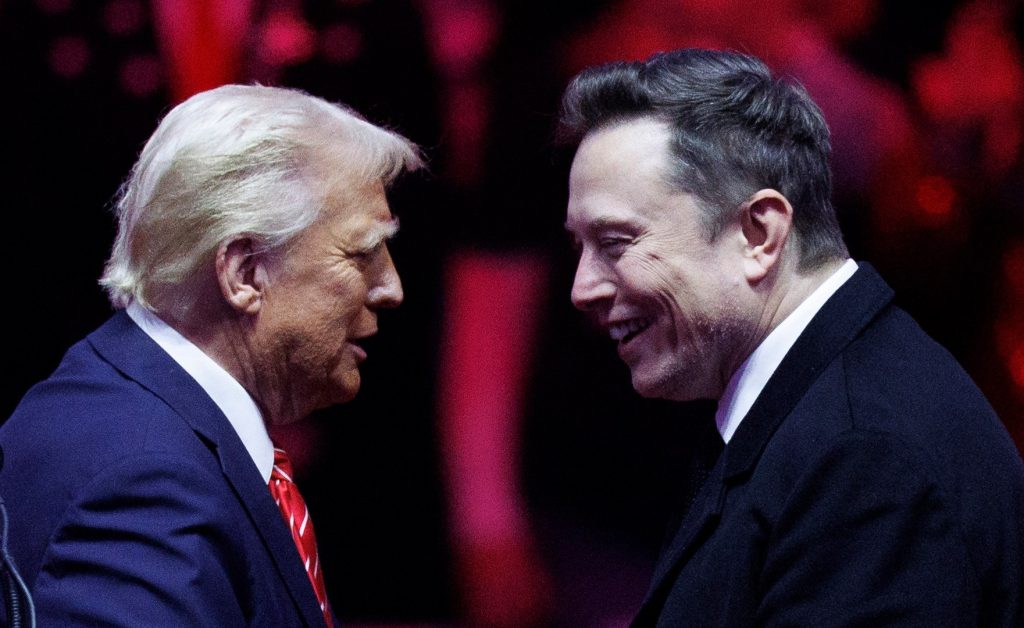
Washington, DC – The ties between United States President Donald Trump and billionaire Elon Musk have seen highs and lows throughout the years. But it all came crashing down on Thursday after months of what appeared to be an unshakable alliance in the White House. A disagreement over Trump’s massive tax bill has escalated over the past few days, with Musk going so far as to suggest that the US president should be impeached. In a series of social media posts, Musk launched personal attacks against Trump, culminating in a claim, made without evidence, that Trump is in the “Epstein files”. Those documents relate to the late sex offender Jeffrey Epstein and include travel logs and guest lists related to him and his associates. Part of the Epstein files remain secret, sparking curiosity and conspiracy theories about who might be mentioned. Trump, meanwhile, responded with a social media fusillade of his own. He claimed he asked Musk to leave his White House role and suggested cutting the government subsidies and contracts awarded to the billionaire’s companies. Advertisement So how did the partnership between Musk and Trump collapse? And what may come next for the two men often described as the world’s richest and the world’s most powerful, respectively? The honeymoon phase A few months before the war of words between Musk and Trump erupted, the two seemed like an inseparable political force. Musk had spent nearly $200m to elect Trump to a second term in 2024. Days after his successful election, Trump responded by appointing Musk to lead a newly created government cutting agency, called the Department of Government Efficiency (DOGE). Even the name of the department reflected the leeway that the billionaire investor had in Trump’s administration. The word “doge” refers to an internet meme of a dog, favoured by Musk, that became popular in 2010. In the early weeks of Trump’s second term, Musk became one of the most prominent figures in the administration – and a lightning rod for public criticism. Under his leadership, DOGE sacked thousands of federal employees and gutted various agencies, including the United States Agency for International Development (USAID). Musk appeared so powerful that some Democrats started to refer to him as “President Elon” to get under Trump’s skin. But Trump and Musk presented a united front. During a Fox News interview in February, the US president and his then-adviser appeared side by side and heaped praise on one another. “He gets it done. He’s a leader,” Trump said of Musk. “I love the president. I just want to be clear about that,” Musk said of Trump. Advertisement Musk, who is originally from South Africa, started espousing right-wing views over the past few years and grew vocally critical of Democrats and progressives. Those views became more prominent after he bought the social media platform Twitter, now X, in 2022. As he started to tilt rightward, he used the platform to bash irregular migration and efforts he believed aimed to police free speech, particularly with regards to identity politics and the COVID-19 pandemic. Even during Musk’s political realignment, however, he and Trump exchanged stern criticism. For example, in July 2022, Musk posted that Trump was getting to be “too old to be chief executive of anything”, much less the presidency. He also initially backed Trump’s Republican rival in the 2024 presidential race, Ron DeSantis, even hosting the Florida governor’s campaign launch on X. But the failed assassination attempt against Trump would cement Musk’s shift in allegiance. After a bullet grazed Trump at a rally in Butler, Pennsylvania, in July 2024, Musk announced he would “fully endorse” the Republican leader. He even joined Trump for a return to Butler in September of last year. The unravelling The cliche in politics is that there are no permanent enemies or permanent allies, only permanent interests. That appears to be the case for Trump, who has a history of firing advisers and disavowing former friends. Musk is only the latest high-profile rupture – and one that might not come as a surprise to political observers. Advertisement The unravelling of Trump’s “bromance” with Musk comes at the tail end of a rocky few months, as rumours swirled about closed-door clashes between the billionaire and the president’s inner circle. In April, Musk announced that he would be spending less time at DOGE. By that time, his role appeared to be diminishing, with the billionaire no longer dominating headlines or regularly appearing in the Oval Office. Late in May, Musk criticised the White House-backed tax and budget proposal, known as the One Big Beautiful Bill Act. “I was, like, disappointed to see the massive spending bill, frankly, which increases the budget deficit, not decrease it, and undermines the work that the DOGE team is doing,” Musk told the TV programme CBS Sunday Morning. The bill cuts electric vehicle (EV) subsidies that boost Musk’s Tesla car company. But Musk has maintained his opposition to the bill lies in its increases to the national debt and its byzantine provisions: The bill clocks in at more than 1,000 pages. The notoriously confrontational Trump, who had pinned his vision for the economy on the bill, kept his cool amid Musk’s early criticisms. He even acknowledged to reporters, “I’m not happy about certain aspects of [the bill].” The two men made a public appearance together afterwards in the Oval Office, where Trump celebrated the end of Musk’s role as a special government employee. Even then, Trump insisted that Musk was “not really leaving” his team. Once out of the government, though, Musk not only voiced discontent with the budget bill; he appeared to be lobbying against it. The bill had narrowly passed in the House of Representatives, only to face similarly steep odds in the Senate. Advertisement “I’m sorry, but I just can’t stand it anymore. This massive, outrageous, pork-filled Congressional spending bill is a disgusting abomination,” Musk wrote on X on Monday. “Shame on those who voted for it: you know you did wrong. You know
Russia-Ukraine war: List of key events, day 1,198

These are the key events on day 1,198 of Russia’s war on Ukraine. Here’s where things stand on Friday, June 6 : Fighting Russian drones attacked Ukraine’s capital, Kyiv, where authorities said drone fragments had fallen in at least three districts of the city. Tymur Tkachenko, head of the city’s military administration, said the strikes triggered fires in residential buildings in different parts of the city. There were no immediate reports on casualties. Air defence units were in action repelling Russian drones, according to military authorities in Kyiv, as news outlets reported a series of explosions in the city. International monitors at the Russian-held Zaporizhzhia nuclear power plant in Ukraine have reported hearing repeated rounds of gunfire that appeared to be aimed at drones apparently attacking the site’s training centre, the UN’s nuclear watchdog said. The nuclear plant’s Russian management had earlier said that Ukrainian drones landed on the roof of the training centre in “yet another attack” on the facility. The management said there had been no casualties or damage. The nuclear facility’s reactors are in shutdown mode amid the war. Russian investigators announced that they have opened a criminal case into an “act of terrorism” after a stretch of railway track in Russia’s Voronezh region was damaged in an explosion. Kremlin spokesperson Dmitry Peskov, at his daily briefing with reporters, described the latest rail attack as “nothing other than terrorism at the state level”. Russia has not yet provided evidence that Ukraine ordered the rail attacks, and Kyiv has not acknowledged responsibility. Advertisement Politics and diplomacy Russia will respond to Ukraine’s latest attacks – which have included an audacious drone attack on heavy bomber warplanes in Siberia – as and when its military sees fit, the Kremlin said, accusing Kyiv of state terrorism as US President Donald Trump downplayed prospects for an immediate peace between the countries. Speaking to reporters before his meeting with German Chancellor Friedrich Merz, Trump said he believed that “at some point” there would be peace between Russia and Ukraine. When asked if he would impose further sanctions on Russia, Trump responded, “When I see the moment where it’s not going to stop … we’ll be very, very, very tough. And it could be on both countries, to be honest. You know, it takes two to tango.” Trump also said that he had asked Russian President Vladimir Putin to not retaliate after Ukraine’s drone attacks on Russia’s airbases. North Korean leader Kim Jong Un has promised to “unconditionally support” Russia in its war in Ukraine and said he expects Moscow to emerge victorious, the country’s state media reported. Russia’s Ministry of Internal Affairs said it had put Artyom Timofeyev, a Russian citizen who was born in Ukraine, on a national wanted list on suspicion of taking part in the attacks on Russian military airfields, state news agency TASS reported. Russian media reported earlier that Timofeyev, who reportedly owns a freight forwarding company, had left Russia for Kazakhstan. Russian warplanes targeted in the June 1 drone attack were damaged but not destroyed, and they will be restored, Russian Deputy Foreign Minister Sergei Ryabkov said. The US has assessed that up to 20 warplanes were hit and around half were destroyed during the attack. Germany needs up to 60,000 additional troops under new NATO targets for weapons and personnel, the country’s Defence Minister Boris Pistorius said in advance of the meeting between Trump and Merz on Thursday. NATO is focused on building up its forces to respond to what it sees as an increased threat from Russia. The Trump administration has announced the nomination of US Air Force Lieutenant General Alexus Grynkewich as the next top US general in Europe, and said he would also assume the traditional role of Supreme Allied Commander in Europe. Russia’s Federal Security Service has accused British intelligence of using the British Council, which promotes international education and cultural relations, as a cover to undermine Russia. The security service said it had identified teachers at leading universities who cooperated with the London-based charity. The United Kingdom is now considered “enemy number one” by Russian officials, amid the intensifying conflict between Ukraine and Russia. Slovakia’s parliament, in a thinly attended session, approved a resolution calling on the government not to vote in favour of new sanctions on Russia, raising questions over the country’s future stance on European sanction packages. Advertisement Economy Ukraine’s export losses are set to reach $800m for the period June to December this year, following the expected end of free access to the European Union market, the country’s central bank deputy governor, Serhiy Nikolaichuk, said. Adblock test (Why?)
Chairman of far-right Reform UK party quits after burqa row
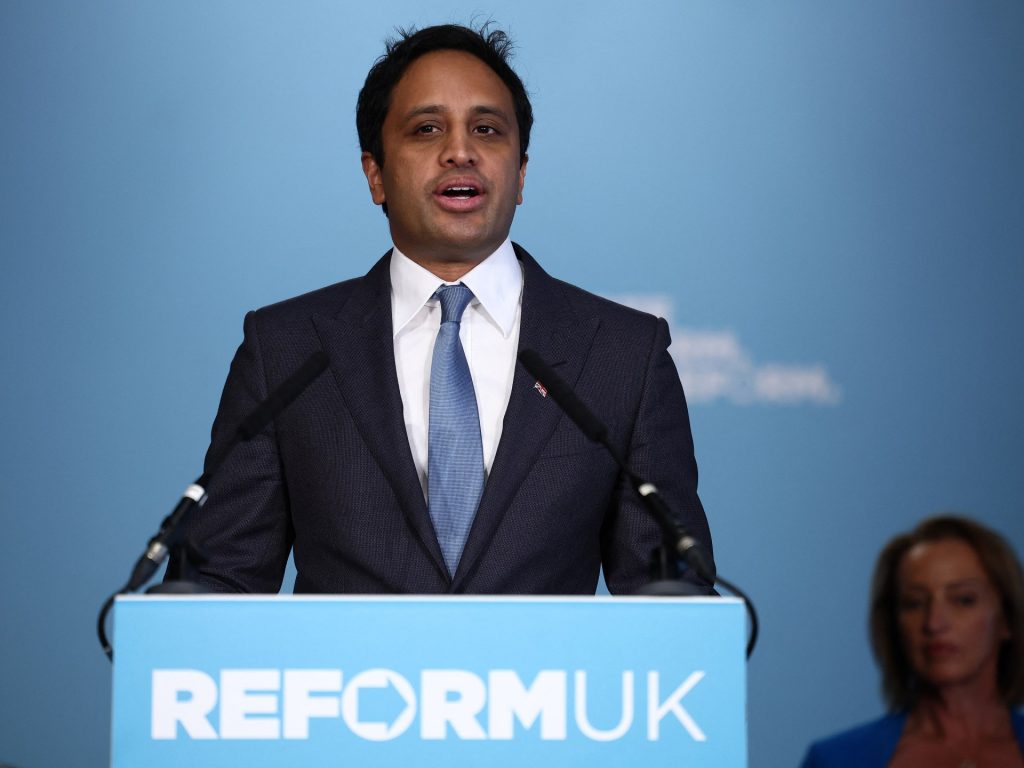
Zia Yusuf, a self-described ‘British Muslim patriot’, leaves a party accused of fuelling Islamophobia after 11 months. The Muslim chairman of the United Kingdom’s radical right-wing Reform UK party has quit after denouncing a call from within party ranks to ban the burqa as “dumb”. “I no longer believe working to get a Reform government elected is a good use of my time, and hereby resign the office,” Zia Yusuf announced on X on Thursday, hours after hitting out at Reform UK lawmaker Sarah Pochin for asking Prime Minister Keir Starmer whether his government would consider banning the burqa. Pochin won her seat in a by-election last month that saw the anti-immigration party, some of whose members have been accused of Islamophobia, make significant gains in a political landscape traditionally dominated by the governing Labour Party and the opposition Conservatives. The new lawmaker had urged Labour’s Starmer during her debut appearance at Prime Minister’s Questions on Wednesday if he would consider the move “in the interests of public safety”, according to the BBC. “I do think it’s dumb for a party to ask the PM if they would do something the party itself wouldn’t do,” Yusuf said on X amid an ensuing flare-up over whether banning the burqa should be party policy. Advertisement Yusuf, a former banker and self-described “proud British Muslim patriot”, became Reform UK chairman after last year’s general election, having jumped ship from the Conservative Party. Reform UK, led by Brexit campaigner Nigel Farage, won four parliamentary seats in a breakthrough result last year, going on to gain a fifth parliamentary seat, its first mayoralty and a number of council seats in local elections last month. It currently leads national opinion polls, ahead of the Labour Party. Farage said on X that Yusuf was “a huge factor in our success on May 1st and is an enormously talented person”. Divisions in the party’s upper ranks have been made public before. In March, Reform referred one of its lawmakers, Rupert Lowe, to police over a number of allegations, including threats of physical violence against Yusuf. Prosecutors later said they would not bring charges against Lowe, who was suspended by the party. Adblock test (Why?)
Israel launches several attacks on Beirut’s southern suburbs

A series of Israeli strikes have targeted Beirut’s southern suburbs on the eve of the Muslim Eid al-Adha holiday, almost an hour after the Israeli army issued a forced evacuation order to residents in areas that it says held underground facilities used by the Lebanese group Hezbollah for drone production. This is the fourth time Israel has attacked Beirut since a ceasefire with Hezbollah went into effect in November. It has carried out assassinations and announced strikes that it said targeted Hezbollah sites. Israel has violated the ceasefire on a near-daily basis for seven months, according to the Lebanese government led by President Joseph Aoun, Arab nations, and rights groups. Aoun has appealed to the United States and France to rein Israel in. Before the attacks on Thursday, Israeli military spokesman Avichay Adraee had ordered residents living near buildings in the neighbourhoods of Hadath, Haret Hreik and Borj el-Barajneh in the Dahiyeh suburbs to evacuate. “You are next to infrastructure belonging to Hezbollah,” Adraee said in a social media post, which included a map of the eight buildings being targeted in four different locations. The message in Arabic indicated that Israel would soon bomb the area. Advertisement After the evacuation order, Lebanese media reported the area was nearly emptied of inhabitants, who had been preparing to celebrate Eid al-Adha. It was sealed off as “warning strikes” could be heard, the reports said. Later Thursday night, the Israeli military also warned residents of the southern Lebanese village of Ain Qana to stay away from two buildings that appear set to be targeted. Ain Qana is located to the east of the coastal city of Sidon. ‘A lot of panic’ Al Jazeera’s Zeina Khodr, reporting from Beirut, in the immediate aftermath of the strikes said: “There was heavy traffic here as people were making their way out. As you can imagine, this did cause a lot of panic. This is not the first time the army has carried out air strikes in Beirut’s southern suburbs since a ceasefire came into force last November, but this is the largest attack.” Khodr said up to eight buildings were targeted in four densely populated neighbourhoods, adding that the magnitude of these air strikes, meant all the area’s residents had to flee. Analyst Rami Khouri told Al Jazeera that the attack was “no surprise”, as Israel has been assassinating people over the last three, four months. They’ve continued occupying five places in South Lebanon after the ceasefire agreement.” “The Israelis have always used military force as their main instrument to get their foes to submit to them,” he said. “But the irony is that it hasn’t worked. It has only generated great dissent, and we’ll have to see in Lebanon what it means … Hezbollah took a hit last year, and they’re obviously regrouping,” he said. “We don’t know exactly what they’re doing, but they are regrouping,” he added. Advertisement Video verified by Al Jazeera’s Sanad agency showed people hurrying away after the evacuation warning: حركة نزوح كثيفة من الضاحية الجنوبية لبيروت بعد تهديد الجيش الاسرائيلي pic.twitter.com/yuqA4giy4v — Al Jadeed News (@ALJADEEDNEWS) June 5, 2025 The Israeli military accused Hezbollah of manufacturing drones in the area in a “blatant violation of the understandings between Israel and Lebanon”. The Israeli military “will work to remove any threat to the State of Israel and its citizens and prevent any attempt to reestablish the terrorist organization Hezbollah”, the military said. “If you talk to people here, what they will tell you is that this is terrorism,” said Khodr, as “Israel warns people to leave in the middle of the night and on the eve of a major religious holiday.” The Lebanese authorities said these attacks were “blatant violations of the ceasefire,” said Khodr. Following the attacks on Beirut’s southern suburbs, the Israeli military also warned residents of a southern Lebanese village on X to evacuate ahead of strikes. Adblock test (Why?)
A ship called Madleen: Gaza’s first fisherwoman inspires solidarity mission
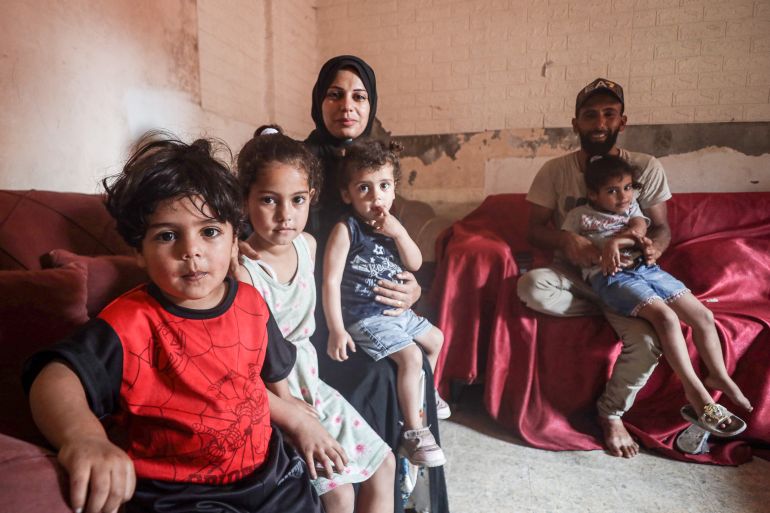
Gaza City – As the Madleen sails towards Gaza to try to deliver life-saving aid to its people, little is known about the woman the boat was named after: Madleen Kulab, Gaza’s only fisherwoman. When Al Jazeera first met Madleen Kulab (also spelled Madelyn Culab) three years ago, she had two children, was expecting her third and lived a relatively quiet life in Gaza City with her husband, Khader Bakr, 32, also a fisherman. Madleen, now 30, would sail fearlessly out as far as Israel’s gunship blockade would allow to bring back fish she could sell in a local market to support the family. When Israel’s war on Gaza began, the family was terrified, then heartbroken when Israel killed Madleen’s father in an air strike near their home in November 2023. They fled with Madleen nearly nine months pregnant to Khan Younis, then to Rafah, to Deir el-Balah and then Nuseirat. Now, they are back in what remains of their home in Gaza City, a badly damaged space they returned to when the Israeli army allowed displaced people to head back north in January. Advertisement Responsibility and pride Madleen sits on a battered sofa in her damaged living room, three of her four children sitting with her: baby Waseela, one, on her lap; five-year-old Safinaz beside her; and three-year-old Jamal – the baby she was expecting when Al Jazeera first met her – at the end. She talks about what it felt like to hear from an Irish activist friend that the ship trying to break the blockade on Gaza would be named after her. “I was deeply moved. I felt an enormous sense of responsibility and a little pride,” she says with a smile. “I’m grateful to these activists who have devoted themselves, left their lives and comforts behind, and stood with Gaza despite all the risks,” she says of the group of 12 activists, who include Swedish climate activist Greta Thunberg and Rima Hassan, a French member of the European Parliament. “This is the highest form of humanity and self-sacrifice in the face of danger.” Madleen Kulab and her husband, Khader Bakr, with their four children in their damaged Gaza City home [Abdelhakim Abu Riash/Al Jazeera] Khader sits on another sofa with six-year-old Sandy. He holds out his phone with a photo of the Madleen on it, flying the Palestinian flag. Madleen has been fishing since she was 15, a familiar figure heading out on her father’s boat, getting to know all the other fishermen and also becoming well-known to international solidarity activists. In addition to bringing home the fish, Madleen is also a skilled cook, preparing seasonal fish dishes that were so famously tasty that she had a list of clients waiting to buy them from her. Especially popular were the dishes made with Gaza’s ubiquitous sardines. Advertisement But now, she can’t fish any more and neither can Khader because Israel destroyed their boats and an entire storage room full of fishing gear during the war. “We’ve lost everything – the fruit of a lifetime,” she says. But her loss is not just about income. It’s about identity – her deep connection to the sea and fishing. It’s even about the simple joy of eating fish, which she used to enjoy “10 times a week”. “Now fish is too expensive if you can find it at all. Only a few fishermen still have any gear left, and they risk their lives just to catch a little,” she says. “Everything has changed. We now crave fish in the middle of this famine we’re living through.” The Madleen has several prominent figures on board aiming to break Israel’s siege of Gaza, including climate activist Greta Thunberg and Rima Hassan, a French member of the European Parliament [Abdelhakim Abu Riash/Al Jazeera] Sleeping on a bare floor, newborn in her arms After the air strike near the family home in November 2023, Madleen’s family’s first displacement was to Khan Younis, following Israeli army instructions that they would be safer there. After searching for shelter, they ended up in a small apartment with 40 other displaced relatives, and then Madleen went into labour. “It was a difficult, brutal birth. No pain relief, no medical care. I was forced to leave the hospital right after giving birth. There were no beds available because of the overwhelming number of wounded,” she says. When she returned to the shelter, things were just as dire. “We didn’t have a mattress or even a blanket, neither me nor the kids,” she said. Advertisement “I had to sleep on the floor with my newborn baby. It was physically exhausting.” She then had to tend to four children in an enclave where baby formula, diapers and even the most basic food items were almost impossible to find. The war, she says, has reshaped her understanding of suffering and hardship. In 2022, she and Khader were struggling to make ends meet between Israel’s gunship blockade and the frequent destruction of their boats. There was also the added burden of being a mother with small children and undertaking such physically taxing work. But now, things have gotten far worse. “There’s no such thing as ‘difficult’ any more. Nothing compares to the humiliation, hunger and horror we’ve seen in this war,” she says. A ship named Madleen Throughout the war, Madleen remained in touch with international friends and solidarity activists she had met through the years. “I would share my reality with them,” she says. “They came to understand the situation through me. They felt like family.” Her friends abroad offered both emotional and financial support, and she is grateful for them, saying they made her feel that Gaza wasn’t forgotten, that people still cared. She is also grateful for being remembered in the naming of the Madleen, but she worries that Israeli authorities will not let the ship reach Gaza, citing past attempts that were intercepted. “Intercepting the ship would be the least of it. What’s more worrying is the

